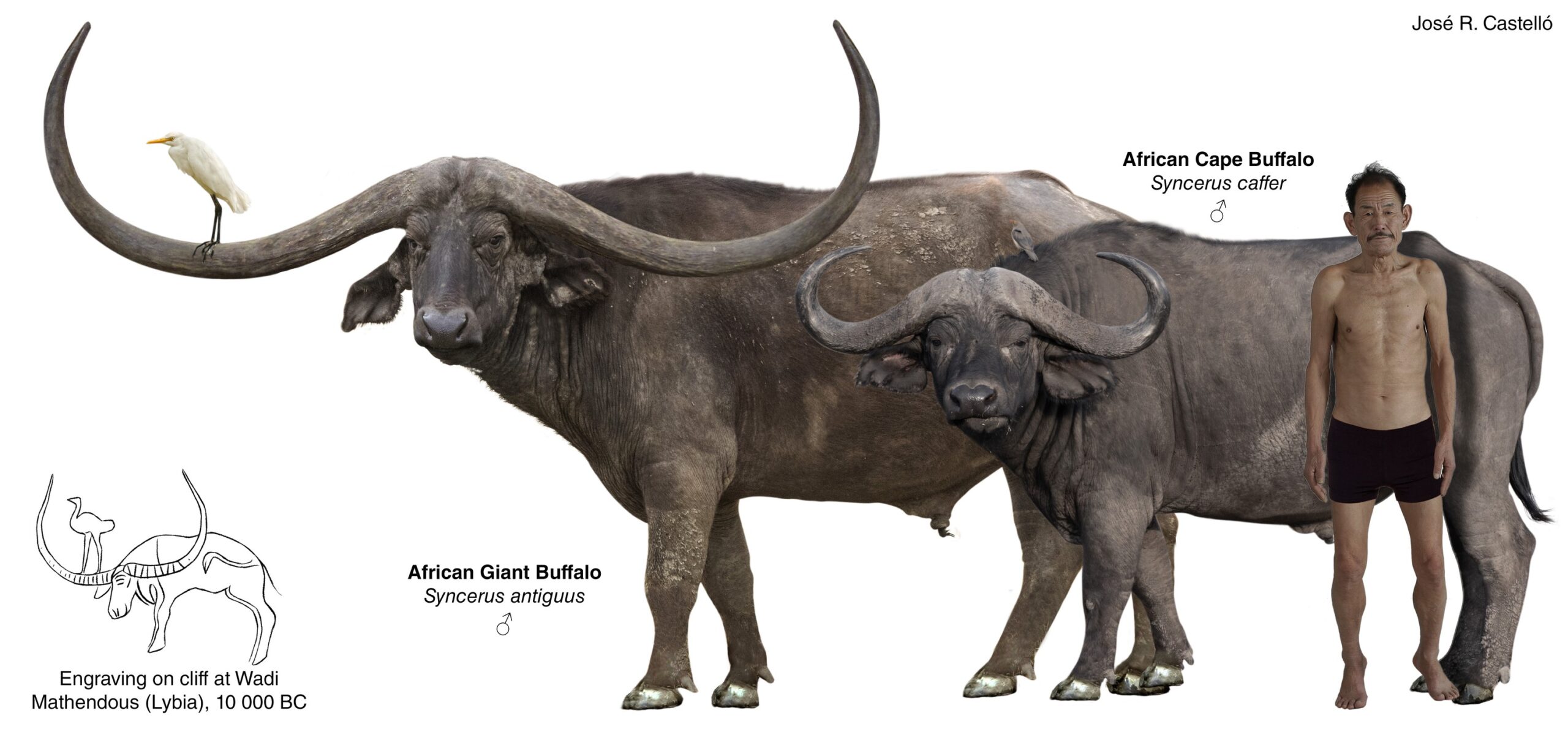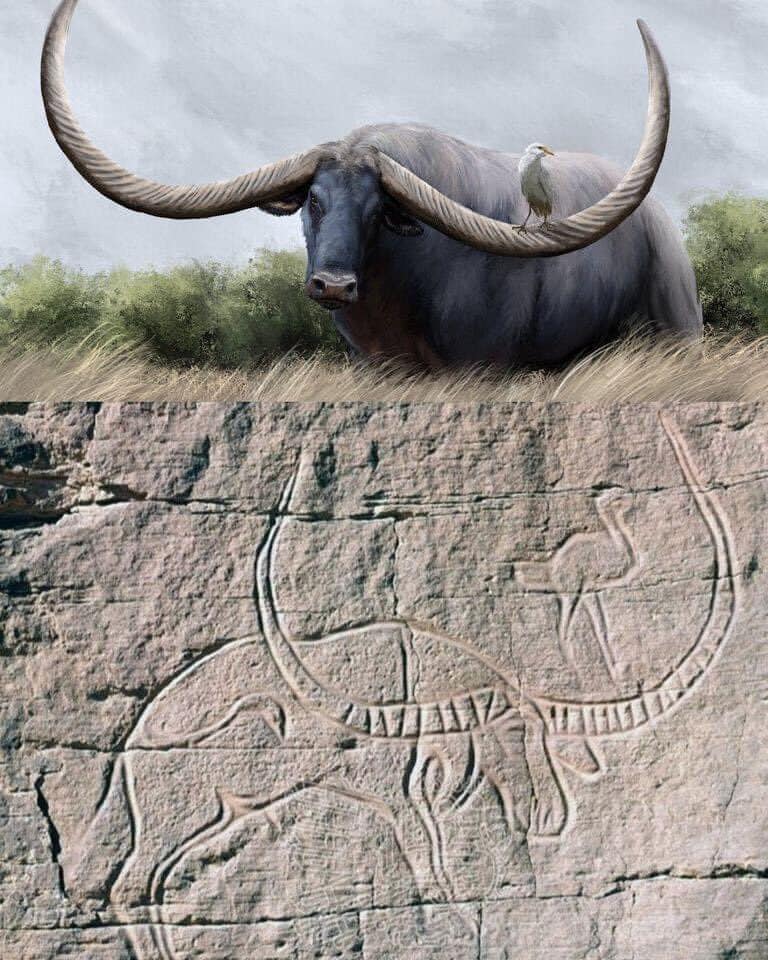
Recreation of the extinct African Giant Buffalo (Syncerus antiquus), a close relative of the modern African buffalo (Syncerus caffer), and the largest bovid described from the African continent, with massive horns reaching sizes of as much as 3 meters from tip to tip. It was widespread throughout eastern, southern, and northern Africa, although limited to wide-open areas with few trees. Dated to the Pliocene, 2.5 million years ago, rock art from North Africa suggests that this species may have survived into the Holocene. Its extinction has been attributed to climatic change and habitat loss, and to some extent, human predation. Jose Ramon Castello
Thomas McIntyre would have flipped out to hunt the giant ones.
An 8000-year-old petroglyph at Wadi Mathendous in Libya, depicting the extinct Syncerus antiquus with a cattle egret on one of its horns. The Syncerus antiquus is the largest bovid described from Africa with the largest horn cores reaching sizes of as much as 3 metres from tip to tip.
Christabel Mwanza
As usual, open in new tabs to embiggen.

